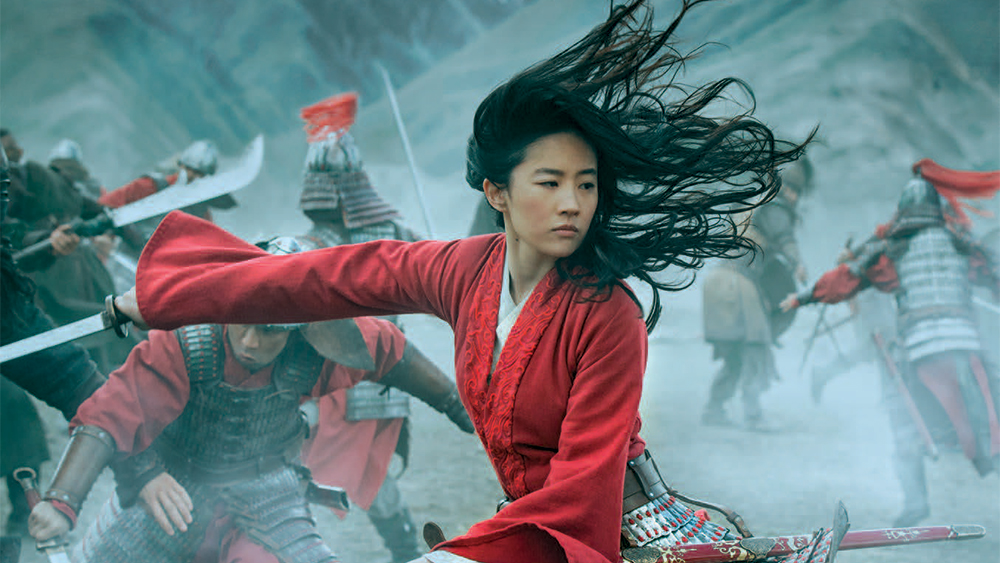Butler students and faculty share their reactions on the new Mulan live-action remake. Photo courtesy of Variety.
EMMA QUASNY | ASSISTANT CULTURE EDITOR | equasny@butler.edu
The 1998 “Mulan” Disney movie is a classic film that many Disney fans stan, resulting in high expectations for the live-action remake. When the 2020 live action movie was released on Sep. 4, some “Mulan” fans were very disappointed, which has led to everything from general dislike to straight up boycotting.
Between the $30 rental fee on Disney + and the absence of Mulan’s loveable, fire-breathing sidekick Mushu, the latest Disney remake is lacking on every possible front.
The “Mulan” animation is known for its musical soundtrack, as well as the empowering plot, where Mulan proves she can do anything that a male soldier can. According to Emma Gifford, a sophomore triple majoring in political science, history and peace and conflict studies, the live-action is a far cry from the original.
“So obviously you don’t have the love interest of Shang anymore and there’s not Mushu, there’s no music, the grandma is gone, now there is a sister instead,” Gifford said. “Some of the shots in the background are similar, but it’s just a totally different vibe.”
Disney said that they wanted to gear this version of “Mulan” towards a Chinese audience and make it feel authentic to the Chinese culture, according to a statement in the New York Times.
Molly Roth, a junior elementary education major with a minor in diverse learners, feels that the remake doesn’t feel authentic, even though it was intended for a Chinese audience.
“I mean, a really big issue that I had with it in the beginning, and I still have with it, is that the primary writers of the movie are white, and I think that very much gives off a sense of inauthenticity and it feels like a misrepresentation of culture even if they did cast Asian people in it,” Roth said.
According to the New York Times, Disney even shared the script with Chinese officials and took advice from Chinese consultants, but Roth said even that didn’t help make the movie feel authentic.
Xiaoqing Liu, an associate professor of Chinese at Butler, also believes this movie was a misrepresentation when it came to the Chinese culture.
“I can think that the directors tried because they hired those Chinese and Asian actors that the Chinese audience all know, so he tried to make it closer to Chinese people and culture, but I guess they didn’t study Chinese culture well,” Lui said.
Liu explains that when she was reading some Chinese articles and websites, they rated this movie a 4.9/10. She also said she believes the Chinese audience had higher expectations than Americans because the story of “Mulan” is widely known throughout many Chinese and Asian households.
“There is this poem that we actually learn in primary school from which the story of “Mulan” originates from,” Liu said.
Many fans believe the biggest controversy behind this film is where Disney decided to film parts of the movie. Specifically, the film was shot in Xingjian, a region in China where the government has been accused of human rights abuses against Uighurs and other predominantly-Muslim minorities.
It wasn’t until the end credits began rolling that people noticed Disney had thanked the government for letting them film there. Disney’s act of thanking the oppressive government of Xingjian is what caused fans to become upset and boycott the film.
Gifford expresses how upset she is about Disney’s actions.
“There are other places that they could have filmed that would have gotten the quote-unquote “China” effect or like “Chinese landscape” effect that they were going for without having to shoot there,” Gifford said.
Roth said that filming in Xingjian and then thanking the government instead of addressing the issue behind it is ironic, considering what the story of “Mulan” is about.
“The original story of “Mulan” is supposed to be about standing up for what you believe in and standing up for your family and standing up against oppression, but then they go and film in this location where Muslims are being detained,” Roth said.
Gifford did watch the movie and liked it overall, but said it could have been done better. She also doesn’t believe that the story behind Mulan was theirs to tell.
“They hold the rights, obviously, to the more traditional Disney version of ‘Mulan,’ but [as for] the historical accuracy of the real story of ‘Mulan’, I don’t think that they have the right to that,” Gifford said. “It should be done by people who have been telling this story to their kids for generations, so maybe like an Asian media company could have taken it on instead of Disney because Disney is very westernized and [did] a lot of things to betray the accuracy of the story.”
Roth said she was disappointed in the representation of Chinese culture in the film. She notes that “Black Panther” had incredible Black representation — the entire movie was produced by and cast with people from the Black community, while Mulan was made primarily by white directors.
“It does make me kind of upset that the same company can make such a great movie for the Black community and [the] “Mulan” live-action had so much potential, but it just didn’t pan out,” Roth said. “It [doesn’t] feel authentic and it feels like a misrepresentation of culture even if they did cast Asian people in it.”
Liu says that one of the best movies with accurate Chinese culture that she has seen is “Kung Fu Panda.”
“I remember I watched one and I was really surprised,” Liu said. “They did a wonderful job. The small details of Chinese culture — it’s like so authentic to me and really good, so I think that if people really put effort into it and try to learn other cultures, they can do a good job.”



